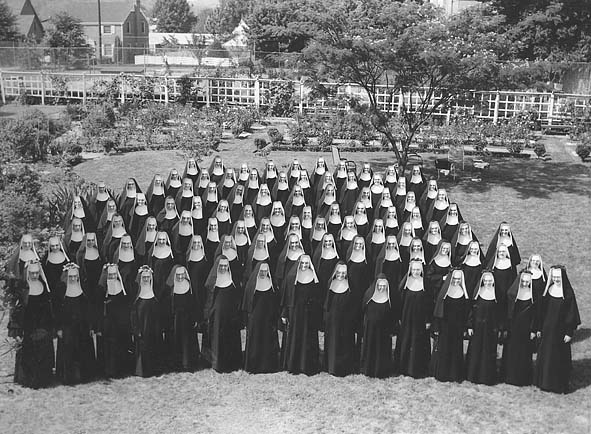Mission in the Mountains
West Virginia’s Pallottine Missionary Sisters
By Joseph Platania
For many years, I was privileged to know two Pallottine sisters as teachers and as close family friends. Sister Anita Fromm and Sister Magna Kuhn were German nuns who, in the early 1930's, had come to the Pallottine mission in West Virginia. For more than 40 years, they taught in Catholic schools in West Virginia, as well as in schools from Maryland to Nebraska. After Sister Magna’s retirement from teaching, she devoted the remainder of her life to the pastoral care of patients in a Pallottine hospital in Huntington and to helping Catholic missions around the world. Sister Anita served as principal of a Huntington Catholic grade school into her 70's. The ability, dedication, selflessness, and devotion of these two religious women made the world a better place in which to live, and had a lasting effect on me.

The Pallottine Missionary Sisters have taught school and provided
medical care in West Virginia since 1912. This impressive group of
nuns from across the country were photographed in Huntington in the
late 1950's.
The accomplishments of the Pallottine Missionary Sisters, especially the pioneer sisters in West Virginia, are enormous. They founded hospitals in Richwood, Buckhannon, Morgantown, and Huntington, established a nursing school, a mother house, covenants, and a novitiate (place of training) – all within their first 50 years in the state. In human terms, there are thousands of patients whom the sisters nursed back to health, and countless students whom they taught in parochial schools throughout the Mountain State.
Vincent Pallotti was born in 1795 and spent his life as a priest in Rome, caring for the sick and less fortunate in his native Italy. He died in 1850 and was canonized as a saint by the Roman Catholic Church in 1963. A legacy of Saint Vincent Pallotti’s charitable work are orders of sisters and priests. In 1895, the Pallottine sisters, a nursing and teaching order, started a community and a mother house in Limburg, Germany.
The story of the Pallottine order in America began when four courageous sisters – Franciska Zabel, Alacoque Raedeker, Prisca Hess, and Dominica Senn – embarked from Germany in April 1912. The sisters’ journey began with a near disaster. They were scheduled to leave on the ill-fated Titanic, but were delayed several days and had to take another ship, the Bremen. On their third day at sea, the Bremen passed through the wreckage of the Titanic still floating in the ocean.
The missionaries arrived in New York after 11 days at sea and were scheduled to depart by train for the town of Stella Niagara, New York. Again they were delayed. They must have said a prayer of thanksgiving, however, when they learned that the train they had planned to take had wrecked, killing many passengers.
At Stella Niagara, the newcomers stayed with another community of nuns while they studied English and waited for a place to start their missionary work. They did not wait long. In August 1912, the Reverend Nicholas Hengers, a priest who had established a parish and a grade school in Richwood, came from West Virginia to Stella Niagara, seeking teachers to take charge of the religious education of the youth of his parish.
Upon his arrival, Father Hengers discovered that the convent at Stella Niagara had no sisters to spare. The Mother Superior then introduced the priest to the four German nuns who were staying with them. Father Hengers met with the sisters, and the rest, as they say, is history.
On August 12, 1912, the sisters arrived in Nicholas County. During the early 20th century, work in lumber camps and coal mines near Richwood attracted many Catholic immigrants. [See “‘Where the Rails Turn Up’: Slovenes Come to Richwood,” by Nancy Svet Burnett; Winter 2000.] It was to these people that the Pallottines had come, especially to their children.
You can read the rest of this article in the Spring 2003 issue of Goldenseal, available in bookstores, libraries or direct from Goldenseal.